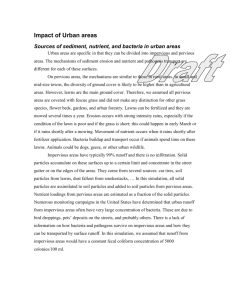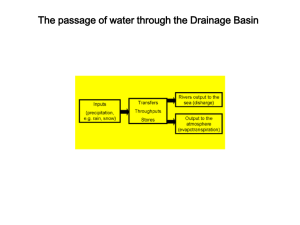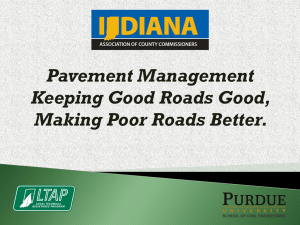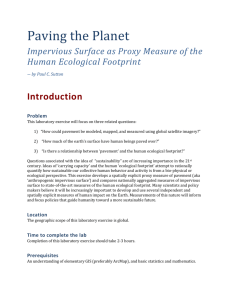Appendix B - City of York
advertisement
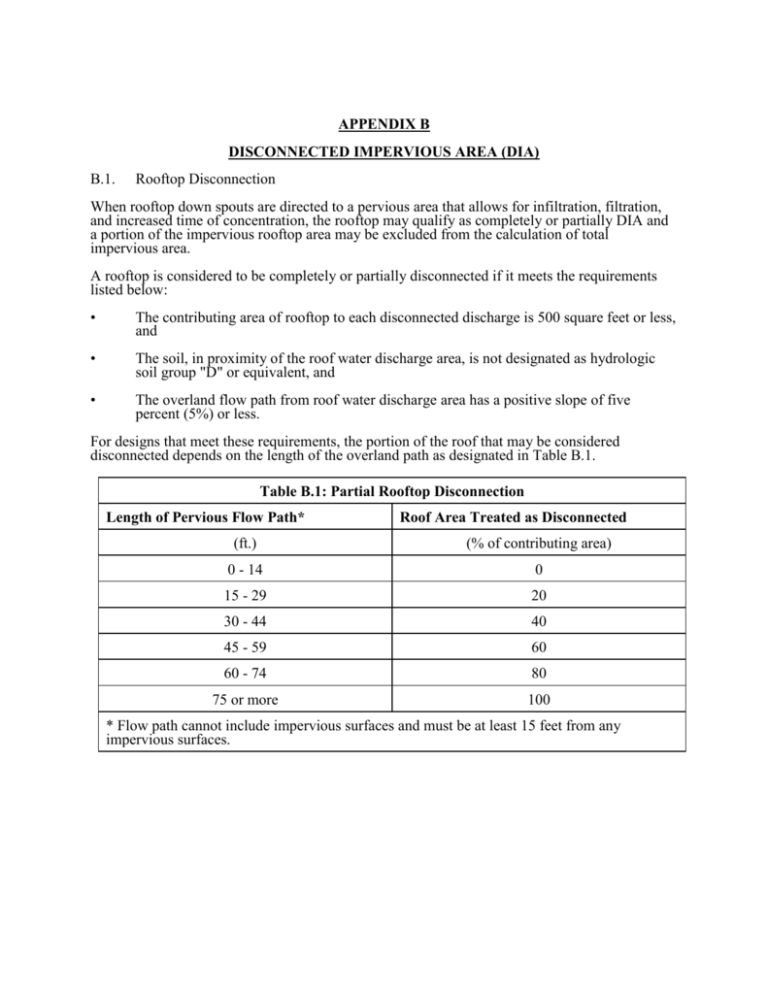
APPENDIX B DISCONNECTED IMPERVIOUS AREA (DIA) B.1. Rooftop Disconnection When rooftop down spouts are directed to a pervious area that allows for infiltration, filtration, and increased time of concentration, the rooftop may qualify as completely or partially DIA and a portion of the impervious rooftop area may be excluded from the calculation of total impervious area. A rooftop is considered to be completely or partially disconnected if it meets the requirements listed below: • The contributing area of rooftop to each disconnected discharge is 500 square feet or less, and • The soil, in proximity of the roof water discharge area, is not designated as hydrologic soil group "D" or equivalent, and • The overland flow path from roof water discharge area has a positive slope of five percent (5%) or less. For designs that meet these requirements, the portion of the roof that may be considered disconnected depends on the length of the overland path as designated in Table B.1. Table B.1: Partial Rooftop Disconnection Length of Pervious Flow Path* Roof Area Treated as Disconnected (ft.) (% of contributing area) 0 - 14 0 15 - 29 20 30 - 44 40 45 - 59 60 60 - 74 80 75 or more 100 * Flow path cannot include impervious surfaces and must be at least 15 feet from any impervious surfaces. 60D B.2. Pavement Disconnection When pavement runoff is directed to a pervious area that allows for infiltration, filtration, and increased time of concentration, the contributing pavement area may qualify as a DIA that may be excluded from the calculation of total impervious area. This applies generally only to small or narrow pavement structures such as driveways and narrow pathways through otherwise pervious areas, e.g., a walkway or bike path through a park. Pavement is disconnected if the pavement, or area adjacent to the pavement, meets the requirements below: • • • • • The contributing flow path over impervious area is not more than 75 feet, and The length of overland flow is greater than or equal to the contributing length, and The soil is not designated as hydrologic soil group "D" or equivalent, and The slope of the contributing impervious area is five percent (5%) or less, and The slope of the overland flow path is five percent (5%) or less. If the discharge is concentrated at one or more discrete points, no more than 1,000 square feet may discharge to any one point. In addition, a gravel strip or other spreading device is required for concentrated discharges. For non-concentrated discharges along the edge of the pavement, this requirement is waived; however, there must be a provision for the establishment of vegetation along the pavement edge and temporary stabilization of the area until vegetation becomes stabilized. REFERENCE Philadelphia Water Department. 2006. Stormwater Management Guidance Manual. Section 4.2.2: Integrated Site Design. Philadelphia, PA.



